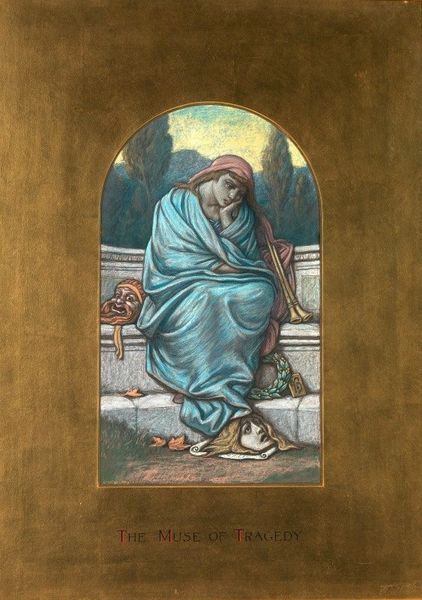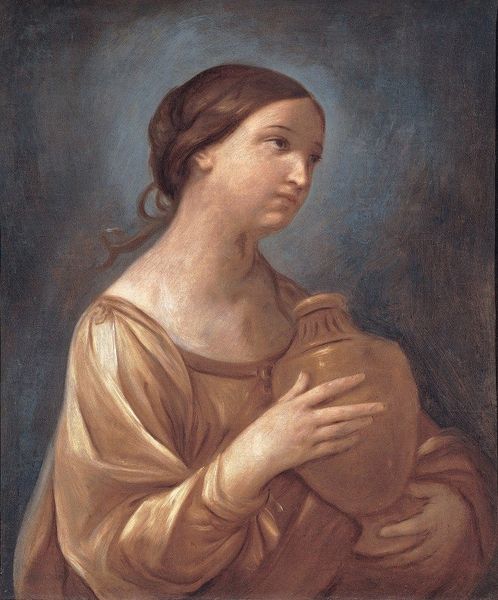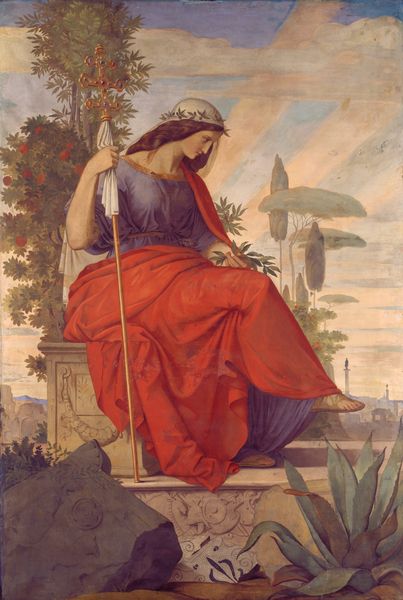
Copyright: Public Domain: Artvee
Curator: Looking at "The Poor Man who Saved the City," created by Evelyn De Morgan in 1901 using oil paint, it strikes me as a rather melancholic piece. The muted tones contribute to the overall feeling of sorrow and contemplation. Editor: Absolutely. There is a quiet dignity conveyed by the sitter, but one immediately notices the figure's posture – head bowed, clasped hands – expressing vulnerability amidst a triumphant historical backdrop. How interesting that De Morgan juxtaposes personal emotion and communal accomplishment. Curator: It's fascinating how De Morgan crafts a narrative using composition. Consider the placement of the figure: he’s physically separated from the celebratory scene behind him, seated on what appears to be the city wall, but excluded. His rough clothing and purse at his feet speak of modest material means, which contrasts against the city celebration scene in the background. What were the possible tensions concerning labor and wealth in Edwardian England she sought to explore? Editor: Good point. De Morgan was actively invested in social reform. It is interesting how her aesthetic and spiritual interests were in tension with social and historical considerations. It’s worth exploring how her involvement in causes like women's suffrage and anti-imperialism shaped her artistic production and influenced choices related to figuration and narrative. Curator: Indeed. Thinking materially, the application of oil paint allows for those subtle gradations in color that contribute to the emotional atmosphere. One imagines her studio practice, the layers built up, and the sheer labor involved. I also think of the commercial side: where did De Morgan acquire the materials, and where was the artwork intended to be displayed? Who was she envisioning as the audience? Editor: That's insightful. We know De Morgan's works, imbued with allegorical meaning, were collected in Britain, the United States, and even Australia, with major holdings in public institutions like the De Morgan Foundation. Returning to the image itself, its symbolic richness allows us to read a tension between individual unrecognized worth and broader social structures. Curator: I think understanding her historical environment is very important when interpreting this picture. Thank you for sharing your knowledge. Editor: My pleasure; these conversations enrich our understanding.
Comments
No comments
Be the first to comment and join the conversation on the ultimate creative platform.













